
The Children We Remember
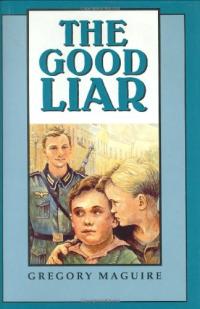
The Good Liar

Behind the Secret Window: A Memoir of a Hidden Childhood during World War Two

A winner of the Caldecott Award for Illustrators, Anita Lobel writes her memoir growing up in Krakow, Poland, during the Holocaust. She was only five when the Nazis invaded, and she is sent to live with their Catholic nanny in the country. Anita and her brother are eventually discovered and deported to a concentration camp where they live until the liberation. Art and books become her saving grace when she finally comes to America as a teenager.
No Pretty Pictures: A Child of War
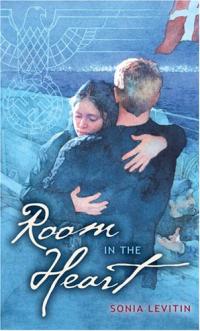
Room in the Heart

I Am David

London Calling

If anyone is looking for a new pet, they may want to consider a rhinoceros. In this amusing book, there’s one for sale “cheap.” Black line drawings with an occasional splash of color and a straightforward text reveal the unique strengths of an unlikely friendship with characteristic Silverstein flair.
Who Wants a Cheap Rhinoceros?

Young readers (or listeners) are invited to share whimsical, imaginative, sometimes head-turning, always laugh-inducing poems in this classic collection.
Where the Sidewalk Ends
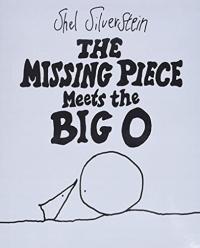
The creature with the missing piece (in the book of the same title) is back. Here it searches for a friend and meets the Big O, learning what it means to have a buddy that suits you well. Simple black line drawings and unadorned language make this a powerful tale that works on many levels.
The Missing Piece Meets the Big O

Its gentle journey begins with melancholy: “It was missing a piece and it was not happy” but concludes with greater self-awareness. The main character is depicted as a Pac-Man-like creature who strives to find what it thinks it’s missing. Simple text and line drawings ideally complement each other in this many-leveled tale.
The Missing Piece
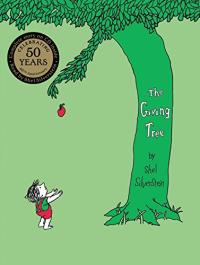
This poignant parable begins, “Once there was a tree and she loved a little boy.” And because she loves him, she gives her all as both boy and tree grow older. When the boy grows into an old man, he sits on the stump of the tree; once again the tree is happy. Simple line drawings complement this timeless tale.
The Giving Tree

Laugh out loud things happen when one has a giraffe who has stretched to become a giraffe and a half. Absurdity and humor build as a boy adds more silly (but rhyming) things to the long-necked animal. Line illustrations build to bring the satisfying tale full circle.
A Giraffe and a Half

As he did in his earlier collections, Silverstein presents the world with shrewd humor, a bit of rebellion, loads of lively language, and endless reader appeal. His signature line drawings add to the comic appeal of the classic poems presented in this collection.
Falling Up

Meet the Pointy-Peaked Pavarius, a Quick-Disguising Ginnit, and other amazing imaginary critters in this poetic bestiary. Delight in the pages of Silverstein’s only collection illustrated in full color. Wordplay and humor are the hallmarks of this engaging collection.
Don’t Bump the Glump! and Other Fantasies
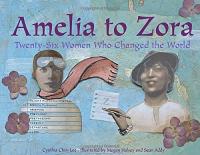
Amelia to Zora

Elena’s Serenade

Frida

“My name is Gabriela Mistral. It is a name I chose myself because I like the sound of it.” With these words, Monica Brown introduces us to the Chilean poet and author who, in 1945, became the first Latin American writer to win the Nobel Prize in Literature. The lyrical text and exquisite illustrations bring Gabriela’s childhood and talent to life for young readers.
My Name Is Gabriela: The Life of Gabriela Mistral / Me llamo Gabriela: la vida de Gabriela Mistral

On Sara Mee’s first birthday, her family made sure to have a tol, a celebration based in an ancient custom that includes guests, special foods, and gifts for the child that will predict what the child will be when he or she grows up. Realistic illustrations capture the warmth of Sara Mee’s family, her birthday festivity, and the warm relationship shared with her older brother. An author’s note and glossary round out this attractive book
What Will You Be, Sara Mee?

The author/illustrator of much-loved picture books is introduced here from her Minnesota childhood to the publication of her Newbery Honor book, Millions of Cats (1928). Each double page spread includes a quote from Gag’s diary followed by a straightforward text coupled with an evocative illustration. An author’s note includes more information, a photograph of Gag, and sources used.
Wanda Gag, the Girl Who Lived to Draw

When Emily Post’s book of etiquette enters the young narrator’s house, his mother uses it to limit her children’s behavior; that is, until the children remind their mother of her Post transgressions. Characters from Emily Post’s book (such as Mrs. Worldly) reveal that even Emily misbehaved sometimes in this playful introduction to etiquette, family, and the early 20th century.
Thanks a LOT, Emily Post!

Brief, lighthearted looks at the wives of the U.S. Presidents from Martha Washington to Michelle Obama are presented as if put together as a class activity. In a note to their teacher, Team USA concludes, “A lot has changed since 1789, but some things are still the same — the president is still a man, and you still don’t get paid to be first lady!”
Smart About the First Ladies

The true story of one of only two Chinese-American women to fly for the U.S. Air Force during World War II, is told as though by Maggie Gee herself. Her dream of flying became reality because of a dream and determination. An author’s note provides a short glimpse into where and what the actual Maggie Gee does today as well as period photographs.
